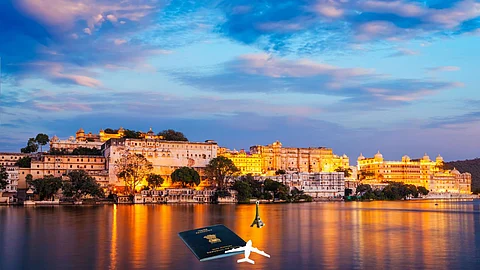

India may be quietly sliding into a sweet spot in the global tourism game. With geopolitical tensions reshaping where people choose to travel, the United States — usually a top draw — has seen a notable dip in foreign arrivals.
According to Julia Simpson, chief executive officer of the World Travel and Tourism Council (WTTC), international visitor numbers to the US dropped 7% in 2023 compared to pre-pandemic 2019 levels. That's based on data from the US Department of Commerce.
While the US stumbles, Simpson believes countries like India could attract the travellers now looking elsewhere.
“If you’re the fourth-largest economy in the world, you also become a very important destination — not just for business, but also for leisure,” she said. And with India’s diaspora frequently flying in to visit family or attend functions, inbound footfall is getting a steady boost.
India’s inbound travel scene might just be getting warmer. Latest projections from the WTTC suggest that foreign tourist spending could touch ₹3.2 trillion in 2025, up slightly from ₹3.1 trillion in 2024. Simpson pointed out that even if overall growth flattens a bit, the quality of spend is going up. Simply put — fewer visitors, perhaps, but with deeper pockets.
She noted that spending numbers have already crossed 2019 levels, implying that the kind of tourists visiting now are more high-value than before. That, she hinted, is not a bad shift at all.
While international tourists bring in the glamour and foreign exchange, it’s India’s own people who are driving the sector’s real growth. Domestic tourism spending is expected to hit ₹16.8 trillion in 2025, rising from ₹15.5 trillion in 2024 — which was already 22% above the 2019 benchmark.
Simpson didn’t overstate it, but the underlying suggestion was clear: with more Indians travelling within the country, domestic tourism is becoming a robust fallback even when global trends waver.
For now, tourism accounts for just under 7% of India’s GDP. But with new airports cropping up — over 200 international ones are expected by 2035 compared to 162 now — and improved connectivity by road and rail, the sector seems set for a longer runway.
WTTC expects that by 2035, international tourist spending could reach ₹4.6 trillion, and domestic spending might hit a whopping ₹32.7 trillion. If these trends hold, travel and tourism might end up contributing close to 10% of India’s GDP — a major jump from the 6.6% recorded in 2024.
The travel and tourism sector pumped nearly ₹21 lakh-crore into the Indian economy in 2024, about 20% more than in 2019. It also supported an all-time high of 46.5 million jobs — about 9.1% of India’s total employment. And foreign arrivals? India clocked 20 million international visitors last year — up 2.3 million from 2019.
Add to that the interest from global investors in India’s hotel and hospitality industry, and there are signs of solid confidence in the market. Simpson flagged the growing number of foreign hotel players setting up shop, alongside Indian giants like the Tata group. According to her, such moves often reflect investor belief that a country is worth the risk.
However, there’s one red flag. Simpson hinted that India might be missing a trick by slashing funds for global tourism promotion. The government has trimmed the overseas marketing budget from ₹100 crore to ₹33 crore in the 2025–26 Union Budget. In an age when younger travellers make holiday choices via social media and influencers, cutting back on visibility could be a step in the wrong direction.
“If you want high-net-worth individuals and younger tourists, you’ve got to market yourself,” Simpson warned, pointing to a missed opportunity India may not afford in a globally competitive travel environment.